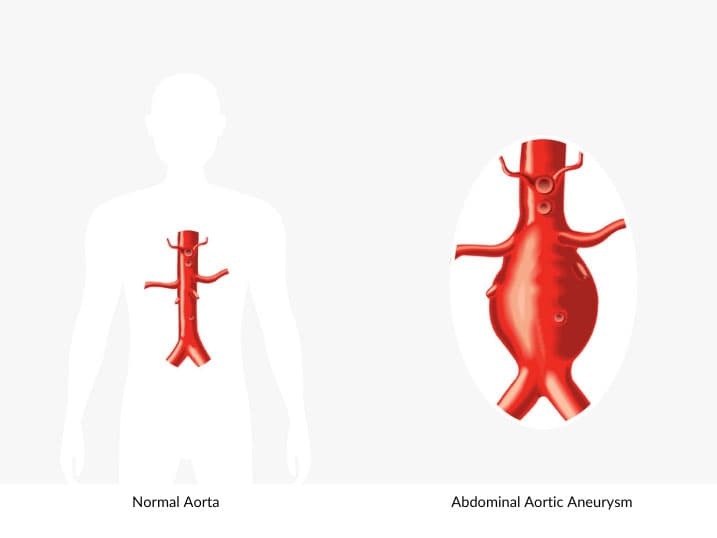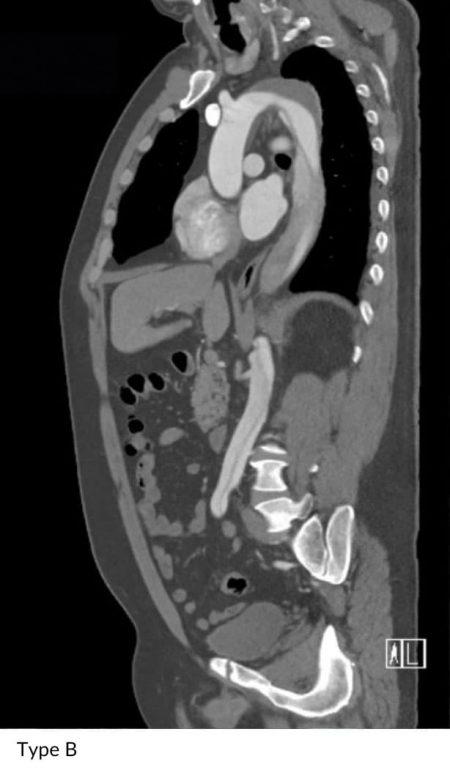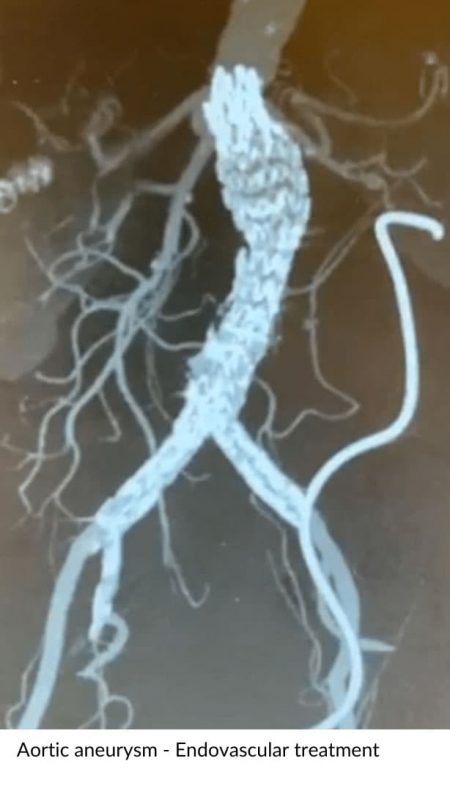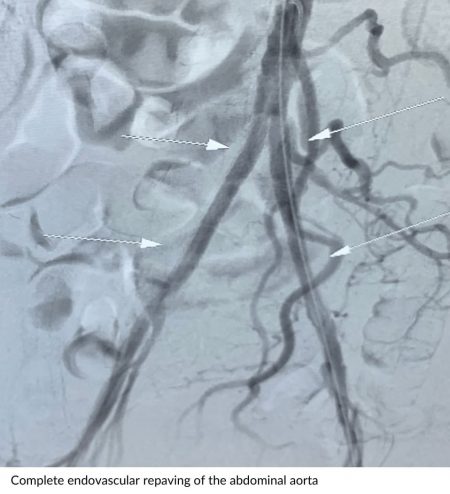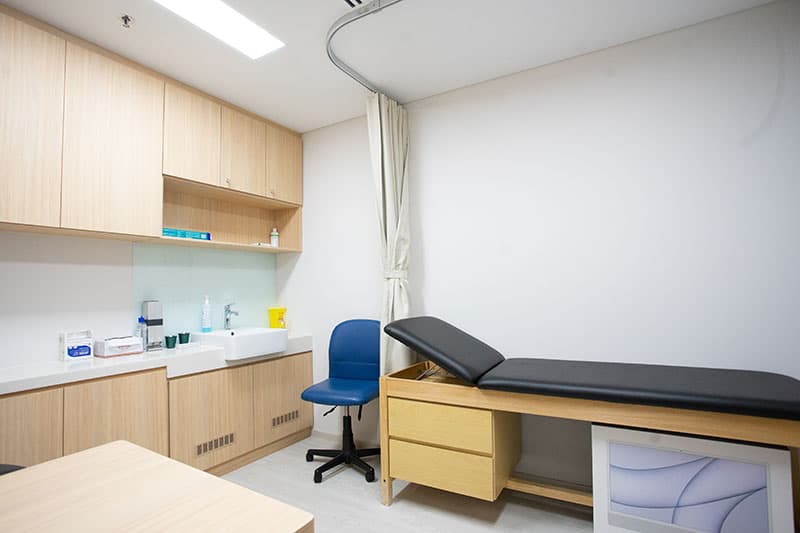What are Aortic Diseases?
The aorta is the main trunk vessel coming out of your heart to the rest of the body, and it gives off many branches to the organs of your body including the head as well as the limbs. Common diseases of the aorta include aneurysm formation (dilatation) and dissection (splitting of layers inside the vessel).
Aortic aneurysm can form in any part of the vessel. However, the most common location is inside the tummy below the kidneys (infra-renal aortic aneurysm). It can happen in 2% of men over 60 and smokers. Aortic dissection tends to happen in younger patients in their 40s and is normally associated with persistent undiagnosed high blood pressure. All aortic diseases are related to high blood pressure, smoking, high cholesterol and family history.




